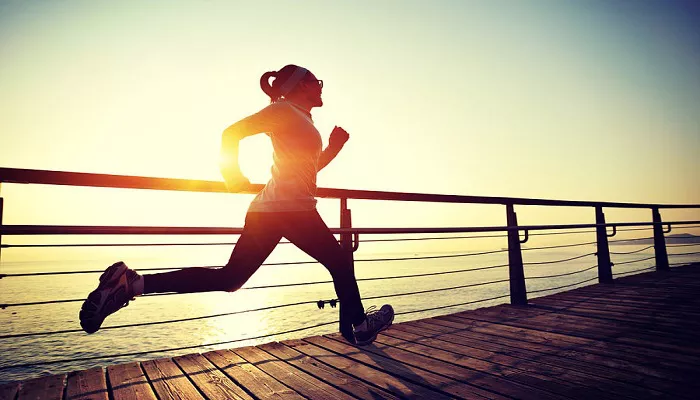In the vast realm of traditional Chinese medicine, exercise for health preservation shines as a precious gem, encapsulating profound wisdom and abundant practical know – how. In recent years, traditional Chinese physical activities like Tai Chi and Baduanjin have become regular fixtures in communities, gracing squares and parks as integral parts of the national fitness drive. Thanks to their simplicity in learning and flexibility in terms of exercise locations, they have won the hearts of fitness enthusiasts of all ages.
The National Administration of Traditional Chinese Medicine recently convened a special press conference on “Traditional Chinese Medicine and Sports Health”. During the event, officials from relevant departments and traditional Chinese medicine experts shared the concepts and methods of maintaining health through exercise in the context of traditional Chinese medicine.
The Principle of Moderate Intensity
Traditional Chinese medicine places great emphasis on the role of exercise – based health preservation in safeguarding well – being. Over the course of history, numerous forms of exercise have emerged, including Tai Chi, Wuqinxi, Yijinjing, and Baduanjin. According to Zhu Liguo, an academician of the Chinese Academy of Engineering and director of the National Center for Traditional Chinese Medicine Sports Medicine, these exercises can regulate the flow of qi and blood by balancing Yin and Yang and unclogging the body’s meridians, thereby achieving the effects of physical fitness, health care, and longevity.
In Zhu Liguo’s view, the Huangdi Neijing mentions the concept of “the body is tired but not weary”, which implies that exercise should be carried out in moderation, and individuals should seek out the most suitable exercise methods for themselves. For example, after exercise, one should focus on regulating their breathing, exhaling slowly while conserving the body’s Yang energy to prevent its dissipation. This aligns with the traditional Chinese medicine principle of “movement generates Yang, and stillness nourishes Yin”.
When it comes to exercise intensity, Zhu Liguo emphasizes several key points
Different people have different constitutions. For those with a Yang – qi deficiency, gentle exercises such as Tai Chi and Baduanjin are recommended. The opening and closing movements of these exercises can stimulate the body’s Yang energy and help it rise. Moreover, individuals with Yin deficiency or qi deficiency should avoid overly strenuous exercise. Instead, they should opt for relatively gentle activities like walking to regulate their breathing and nourish their spirit. Excessive sweating should be avoided, as it can cause the body’s qi to be lost along with the sweat, potentially causing harm.
During exercise, it is crucial to pay attention to the body’s signals, especially breathing. If shortness of breath occurs and speech becomes intermittent during exercise, it means the intensity is too high. Sweating should be light to moderate; excessive sweating should be avoided to prevent the loss of qi along with body fluids.
Avoid Overexertion: Exercise should not lead to excessive fatigue. If one experiences soreness in the waist and legs after exercise, it may have a negative impact. A good exercise session leaves a person feeling refreshed, with no excessive muscle soreness or fatigue the next day.
The best time for exercise is in the early morning. As the sun rises, Yang energy begins to ascend, and exercising at this time is highly beneficial for stimulating the body’s Yang energy. Vigorous exercise should be avoided at night, as the night is associated with Yin, and it is important to protect the body’s Yang energy during this time.
Everyone should select their exercise routine based on their physical condition. Zhu Liguo suggests that most people choose moderate – intensity exercise. “What exactly does moderate intensity mean?” he asks. One can refer to the heart rate index. There is a formula: (220 – age) × 60%, which represents the lower limit of the heart rate. The formula (220 – age) × 70% gives the upper limit. For example, for a 30 – year – old, the lower limit of the heart rate is 114, and the upper limit is above 130. If the heart rate remains within this range after exercise, it can be considered moderate intensity.
Many people enjoy walking. Zhu Liguo recommends that each walking session should last between 30 and 60 minutes, with a step count of 6,000 to 10,000 steps being ideal for a moderate – intensity workout. Given the decline in physical fitness among the elderly, they are advised to walk for 30 to 40 minutes, or take 4,000 to 6,000 steps. These steps can be divided into two or three segments, which is beneficial for their health. “For those who like jogging,” he adds, “we suggest not running too long at once; 3 to 5 kilometers is appropriate.” Such balanced exercise is beneficial to the body, as it not only stretches the muscles and bones and promotes blood circulation but also prevents excessive fatigue and the depletion of Yang energy.
Related topics


